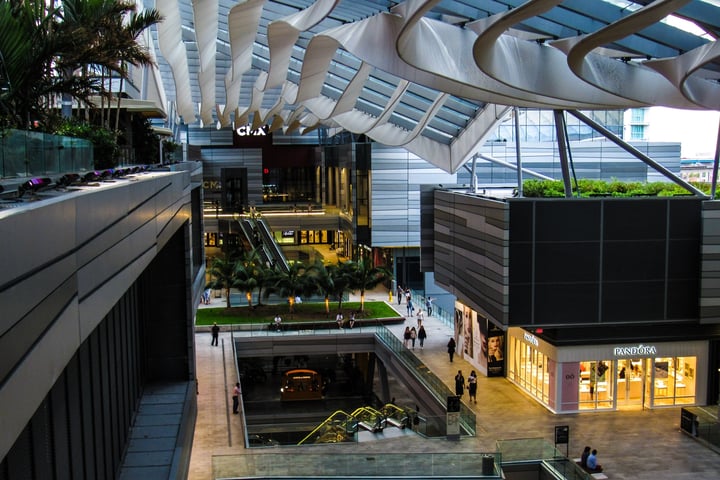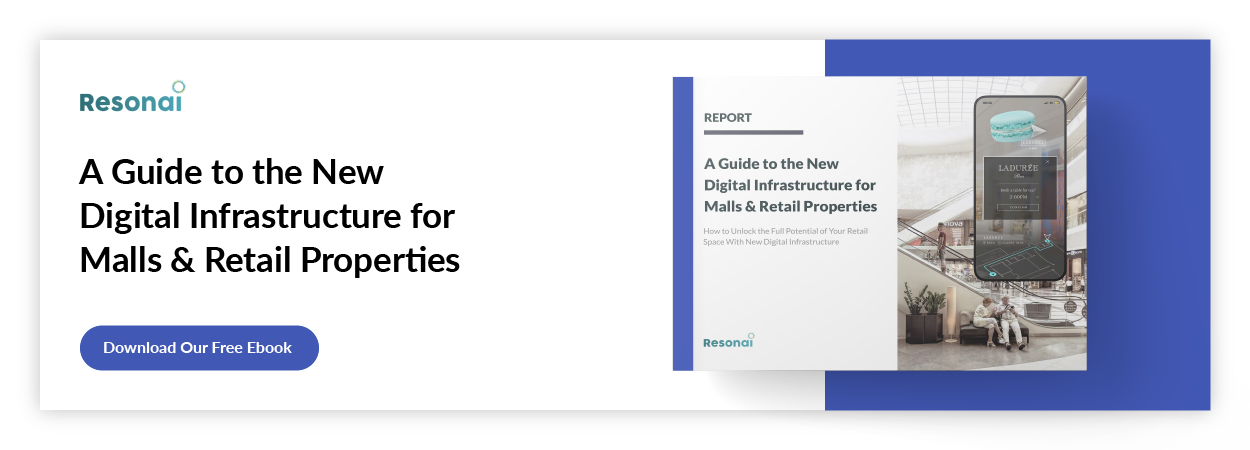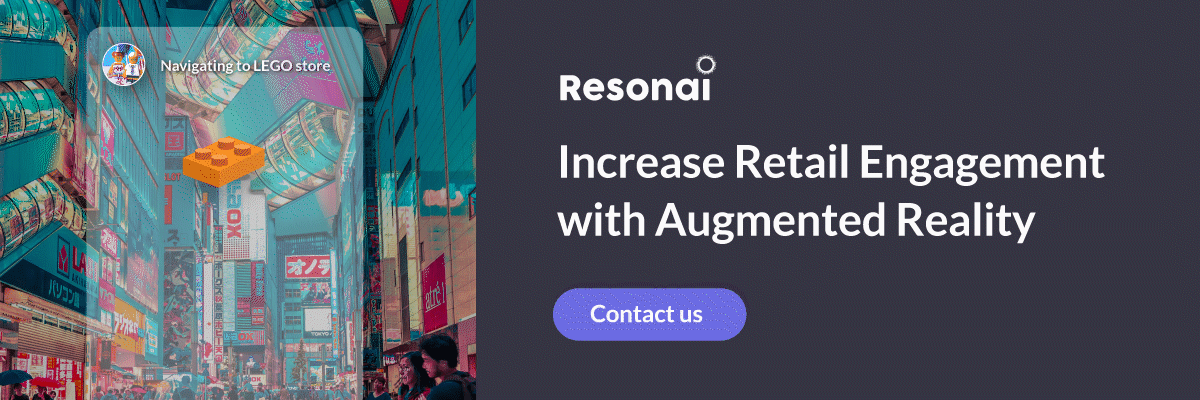Previewing the Mall of the Future
How retail properties will change to meet evolving consumer priorities
 Reports of the mall’s death have been greatly exaggerated. Online shopping may be de rigueur today, but the in-store option hasn’t gone anywhere — it’s just changed its look. Today and tomorrow’s in-store shoppers want more than a simple transaction. By combining exciting technology with a sustainability-minded approach, the mall of the future will create shopping experiences that maintain physical retail’s indispensability.
Reports of the mall’s death have been greatly exaggerated. Online shopping may be de rigueur today, but the in-store option hasn’t gone anywhere — it’s just changed its look. Today and tomorrow’s in-store shoppers want more than a simple transaction. By combining exciting technology with a sustainability-minded approach, the mall of the future will create shopping experiences that maintain physical retail’s indispensability.
Jump to a section…
Priorities for the mall of the future
Expand your knowledge of shopping mall design and best practices with The Planner’s Guide to Mall Design.
Priorities for the mall of the future
Even among Gen Z, the most online cohort in history, half of shoppers prefer in-store shopping to buying online. Plus, the two modes of shopping can bolster one another: opening a new physical store can lead to web traffic increases of up to 37%, and physical stores provide a way for retailers to capture value from the relatively high proportion of online shoppers that return items by giving them a convenient return location and encouraging new purchases in-person. But malls need to innovate to maintain and expand their footprint among consumers. There are three key elements they should consider in the process: personalization, experience, and sustainability.
Personalization
In our increasingly algorithmic world, customers want any experience they have to be customized to their tastes — even when they’re not scrolling through their TikTok feed. One McKinsey poll found that 71% of consumers expect companies to deliver personalized interactions, and 76% get frustrated when that personalization falls short. This presents both a challenge and an opportunity for physical retailers. The same poll found that faster-growing companies drive 40% more revenue on average from personalization than their slower-growing competitors.
Experience
Drawing customers into the store means offering them more than a simple transaction. Research shows that enjoying the in-store experience is the most popular primary motivation for a visit to the store and that 81% of customers are willing to pay more for something unique and memorable. In-store activities such as demos, games, or other events are top of mind for these shoppers, and businesses must meet that demand.
Sustainability
According to the Pew Research Center, Millennials and Gen Z are the two generations most concerned with climate change. They're the most likely to list addressing climate change as their top personal concern and most likely to take direct action to address it. Malls have the chance to harness these concerns to attract young customers and build more sustainable businesses, as a Futerra poll found 88% of consumers want brands to help them live more environmentally sustainable lives.
Solutions
Augmented reality
Augmented reality (AR) presents mall operators with a powerful opportunity to make the in-store experience more personal and more memorable. Its applications range from practical to show-stopping.
In the mall of the future, customers can use their phones to get personalized, real-time navigation to anywhere in the building. That makes shopping as seamless as possible and helps the customer feel cared for. Along the way, they can receive personalized ads or store recommendations related to their destination. If they’ve consented to share other data in exchange for wayfinding capabilities, those recommendations can become even more valuable to them. As they use AR navigation, customers can contribute to aggregated data about foot traffic, providing insight into the value of advertising in different locations or how to improve the flow of traffic. To learn more about the exciting opportunities presented by the digital infrastructure of the mall of the future, click here to download our free ebook.
AR can also create immersive, engaging, and timely events that bring customers into the store again and again. For example, the clothing brand Tilly’s used AR to create a back-to-school-themed scavenger hunt in its stores. This game used exciting AR technology to encourage customers to explore the store and interact with relevant products they might otherwise have overlooked. Ikea, meanwhile, uses AR to help potential customers visualize a piece of furniture in their home before buying.
Experiential environments
With its high square footage, the mall of the future is an ideal location for a “third place,” a sociology term referring to a financially accessible physical location other than work or home where conversation is the main activity. Classic examples include French cafés and English pubs — places where people socialize with their friends and neighbors. Malls can consist of spaces capable of hosting in-person events, guest speakers, workout studios, cafés, and other lifestyle elements that make customers want to stick around for extended periods of time. Incorporating green spaces — lawns, outdoor parks, rooftop terraces — can tap into the eco-conscious tendencies of younger consumers while making them more at ease. By making the environment hospitable to these activities, the mall can position itself as a hub for socializing that also happens to have helpful, relevant stores to peruse.
Those stores can also lean into experiences through approaches such as appointment shopping and showrooming. The former has shoppers book their appointments in advance. Then, when they arrive, they receive the undivided attention of an expert who personalizes their recommendations and keeps the bar for service high. The latter sees the store replace its standard product offerings with a more visually exciting array of fewer items, focusing on giving visitors hands-on time with the available products. These showrooms then make it exceedingly easy to order products online, either in-store or from home. Shopify found that 54% of consumers are likely to take part in showrooming. That may be because the personalized attention and experience build their relationship with the brand operating the showroom. The showroom setup is also easier to refresh, which gives customers a reason to return.
Eco-first approach
The mall of the future must make climate-conscious design a priority. That means using sustainable and raw materials in construction whenever possible to reduce the carbon footprint of the building. Mass timber is one example of a building material that prioritizes sustainability, and there are countless others that are just as eco-friendly and aesthetically pleasing. These new constructions can also incorporate natural ventilation and greenery to reduce their reliance on air conditioning and make a space feel more natural and inviting. Finally, the mall should aim to support more fuel-efficient forms of transportation. Whether that means working with local authorities to ensure reliable public transit, or incorporating infrastructure such as electric vehicle-only parking and charging stations, malls must encourage visitors to adopt a similarly climate-friendly approach.
How Resonai can help
The retail landscape is changing rapidly, and technology is here to help you stay ahead. Resonai’s platform uses powerful semantic recognition and a digital twin of your facility to ensure your customers always know where they’re going — as do your maintenance staff. Combine that with its powerful data collection capabilities and flexible digital advertising infrastructure, and you’ve scratched the surface of its potential. Get in touch with Resonai today to set up a free demonstration.
Subscribe to Our Newsletter!
Read More
The Big List of Shopping Mall Design Standards & Guidelines to Know
Despite the many trend pieces announcing its imminent decline, Americans are not done with the...
5 High-Value Use Cases For Retail Analytics
Brick-and-mortar retailers have been through a gauntlet of change. The rise of ecommerce put many...
4 Retail Foot Traffic Trends Shaping Modern Commerce
Recent developments in retail foot traffic trends prove that, while there was a lull due to the...

